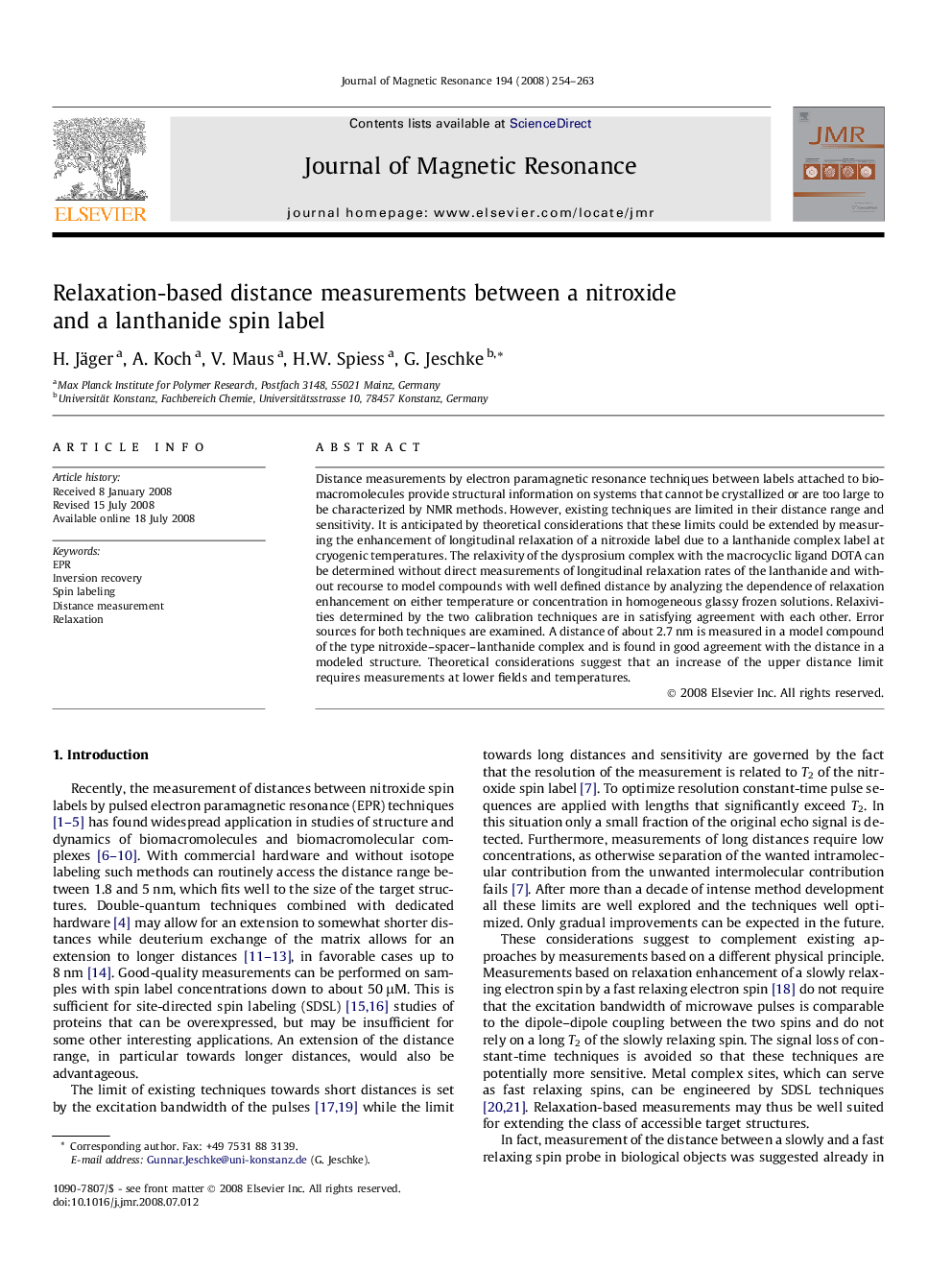| Article ID | Journal | Published Year | Pages | File Type |
|---|---|---|---|---|
| 5407049 | Journal of Magnetic Resonance | 2008 | 10 Pages |
Abstract
Distance measurements by electron paramagnetic resonance techniques between labels attached to biomacromolecules provide structural information on systems that cannot be crystallized or are too large to be characterized by NMR methods. However, existing techniques are limited in their distance range and sensitivity. It is anticipated by theoretical considerations that these limits could be extended by measuring the enhancement of longitudinal relaxation of a nitroxide label due to a lanthanide complex label at cryogenic temperatures. The relaxivity of the dysprosium complex with the macrocyclic ligand DOTA can be determined without direct measurements of longitudinal relaxation rates of the lanthanide and without recourse to model compounds with well defined distance by analyzing the dependence of relaxation enhancement on either temperature or concentration in homogeneous glassy frozen solutions. Relaxivities determined by the two calibration techniques are in satisfying agreement with each other. Error sources for both techniques are examined. A distance of about 2.7Â nm is measured in a model compound of the type nitroxide-spacer-lanthanide complex and is found in good agreement with the distance in a modeled structure. Theoretical considerations suggest that an increase of the upper distance limit requires measurements at lower fields and temperatures.
Related Topics
Physical Sciences and Engineering
Chemistry
Physical and Theoretical Chemistry
Authors
H. Jäger, A. Koch, V. Maus, H.W. Spiess, G. Jeschke,
